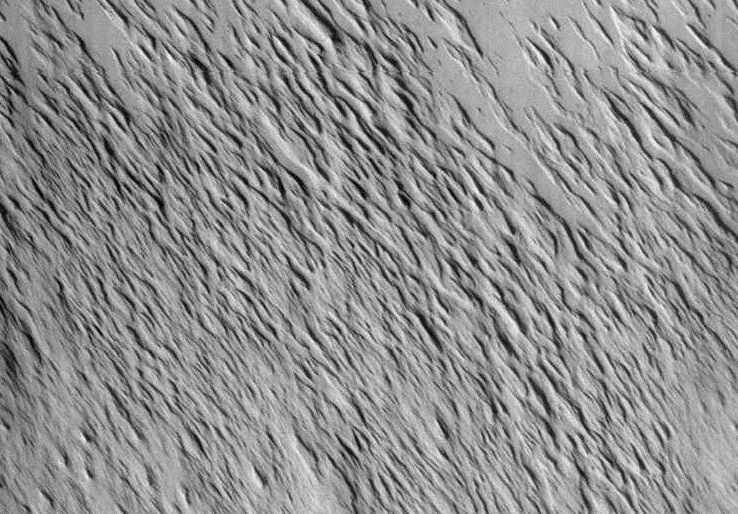
A mysterious rock formation on Mars, which has perplexed scientists for decades, was likely formed as a result of a series of explosive volcanic eruptions more than 3 billion years ago. That's according to a new study published in the Journal of Geophysical Research.
The Medusae Fossae Formation is a vast, unusual deposit of soft rock comprising hills and valleys, which extends for more than 3,100 miles across Mars's equator. From above, it appears to have a smooth and undulating surface. However, in some places there are pronounced ridges and grooves.
Scientists first spotted the formation in the 1960s in images captured by one of NASA's Mariner spacecraft, but the process of how it was produced has remained unclear. However, research from Johns Hopkins University has cast new light on the history of the rock deposit.
The formation itself is 100 times larger than the biggest explosive volcanic deposit on Earth. In total, it would cover around a fifth of the continental United States.
"This is a massive deposit, not only on a Martian scale, but also in terms of the solar system, because we do not know of any other deposit that is like this," Lujendra Ojha, a planetary scientist at Johns Hopkins and lead author of the new study, said in a statement.
The results of the study could help scientists to better understand the geology of Mars's interior, as well as its past potential to support life, the authors say.
The eruptions that created the formation would have had a huge influence on the planet. For one, they would have emitted enough volcanic gas to warm the Martian climate, as well fundamentally alter the chemistry of its surface and atmosphere.
Meanwhile, they could have spewed out enough water to cover the entire planet in an ocean more than 4 inches thick, according to Ojha. That may well have remained as a liquid due to the increase in temperatures. Taken together, these processes would have significantly altered Mars's potential for supporting life.
The formation is made of sedimentary rock, which forms when dust and debris accumulate and clump together over time. But scientists have not been able to determine whether wind, water, ice or volcanic eruptions deposited the debris there in the first place.
Using data captured from various Mars orbiters, they found that rock in the formation is unusually porous, being about a third less dense than the rest of the Martian crust. This led researchers to conclude that the rock was deposited by explosive volcanic eruptions.
The ash spewed out by these eruptions would have cemented into rock over time, according to Ojha, but around half of it has eroded away since then, leaving behind the distinctive undulating hills and valleys that can be seen today.
Uncommon Knowledge
Newsweek is committed to challenging conventional wisdom and finding connections in the search for common ground.
Newsweek is committed to challenging conventional wisdom and finding connections in the search for common ground.
About the writer
Aristos is a Newsweek science reporter with the London, U.K., bureau. He reports on science and health topics, including; animal, ... Read more
To read how Newsweek uses AI as a newsroom tool, Click here.








